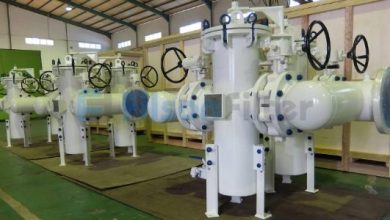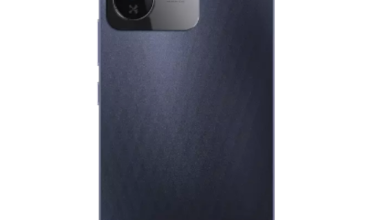Business
What You Ought To Because Of Begin Golfing Much better
What You Ought To Because Of Begin Golfing Much better

Playing golf can be very interesting and very competitive activity which also gives gamers with some great for your health. It just need to give it a shot.Look at the adhering to sentences for a few ideas on performing just that.
A smart Top 10 Best Nike Golf Balls You may eventually locate the best position for yourself in this way. Suitable position is vital, however it can differ based on your elevation, dimensions, and in many cases gender. Your activity will spot substantial enhancement if you locate the proper posture.
Fresh Golf, Satisfaction Guaranteed
Make use of entire body for energy powering your golf swing. Using the forearms only leads to a reduced-power, weakened golf swing, although first-timers often erroneously assume that the forearms strength the golf swing.
Wiggling your toes can assist you figure out how very good your pose since you are about to require a golf golf swing. Whenever you can relocate your feet without difficulties, your posture can be tilted past the boundary rear.
When adding, have your left-hand ahead of the ball. Keep this place through your swing.
If you need to come up with a extended putt, you have to emphasis your attention to rate when showing up in the golf ball. This plan will give you the most effective chance of success to your 2nd putt.
Expand before you phase in the natural and remain hydrated.Remaining in condition can benefit your golf performance specifically.
Be sure you stretch out and hydrate your self completely. Staying in design will benefit your game straight.
To obtain a robust golf swing moving, you need to use all of your muscle tissues, through your upper body down in your thighs.
In case the team has a put on, you are able to explain to by the sparkling, it means it’s been applied excessive, check the club head just before investing in a applied one particular.. This is simply not excellent since the club go will not contain the ball as successfully.
Look at the group go prior to buying a utilized golf club! Donned place in the group, put on place on the head, in case a group has been overused. This simply means the group go is not going to make excellent exposure to the soccer ball as properly.
Don’t get captured attempting to pull off an abnormal healthy posture. Consider exercising your posture without having a club within your team. Flex you knees, bend a little on the stomach, permit your forearms down in a natural way. If you are positioning a group, Clasp the hands together as. In the event you don’t feel comfortable from it, then perhaps you are not location yourself properly, this is exactly what an all-natural position is, so.
This will maintain the golf ball moves directly and true. Exercise adjusting the perspective of your respective swing until you have acquired the way it has an effect on the perspective of your respective photographs.
Stay about three or five ft . right behind the see and ball where you’re going to send out it ahead of dealing with it. Take the time to discover the blowing wind direction and other deciding circumstances.Using the photo will help you correctly line up the ideal positioning and route. When you think about all of these placement and variables yourself nicely, you may get far better aimed towards of where by you need it to land.
Look at the club’s go before purchasing a employed golf club! Night clubs which can be old may have nicks and broken down lines, gleaming area. This is unwelcome because the team go will not likely retain the golf ball as efficiently.
Pay attention to training your quick extended distance golfing abilities when you have tiny chunks of your energy. Center on perfecting your chipping skills and placing capabilities.When you have a little while, get started with wedge practice, specially simple range photographs, and finish your practice with reduced wedge photos.
Having your soccer ball out may result in a bunker may often untidy within the afflicted yellow sand. Before you take your next picture, follow training course regulations and effectively rake the beach sand back in placement.
Find Your Amazing Golf
Always make sure best Nike golf balls Stay in the appropriate position. Shift your foot upwards and down while your toes keep motionless should you don’t know if your stance is right. It ought to take little energy.Should you be leaning higher than the soccer ball very far, then you definitely are inclined past the boundary back again on the other hand, if you find it difficult to tap your foot, you happen to be leaning again past the boundary.
It is important to give consideration when you keep notify throughout a game of the game of golf. You have to be able to play as soon as it is your transform.
The trick is to discover a looking for your game. Why do you require titanium clubs now?
People ignore the facets of suitable grasp. You are able to nonetheless strike a fade or even a pull regardless how solid your left hand is. That’s not the one way accessible to do it, even though teachers typically do fades with weakened left-hand grasp.
The game of golf balls always go missing non-cease.
Create the next bet on playing golf more enjoyable by contending for a winning prize.Try betting on cocktails or supper, and increasing what’s at risk with every single putt compared to person rating.The reward doesn’t really need to be costly just enjoying for some thing will be sure that the video game and make it the bit more interesting.
Timeless Fresh Golf
If you are correct handed, make positive changes to posture by positioning your ft . even closer it.
Swapping the grips is fairly affordable and may increase your golf swing.
And particularly if you end up inclined out of your tee after reaching your soccer ball, then consider putting in some time at the traveling array exercising a baseball-design posture, if you’re possessing a tough time changing your weight throughout your swing.
The overall game of golf is a thing which everybody can also enjoy, but individuals who are best are the people who continually process all day long. With all the extra playing golf information everything you have added to your toolbox, you can turn into a skilled golfer also.



